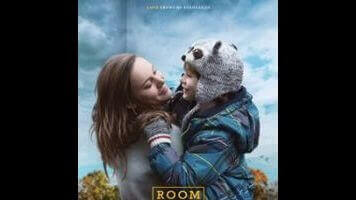Sometimes epilogues can be more meaningful than the stories to which they’re appended. Take Room. Emma Donoghue’s best-selling, award-winning novel and Lenny Abrahamson’s big-screen adaptation both spend as much time on the “what happens next” as the “what happened.” In the first part of the film—constituting less than half of its running time—a young woman and her 5-year-old son endure being held captive round-the-clock in a psychopath’s garden shed. Then they escape, and the second part is about how they recover and reintegrate into a society that doesn’t know how to react to their whole ordeal. On their own, each segment of Room is tense and emotional. But they’re even better placed back-to-back.
Brie Larson plays the mother, Joy, who was abducted from her Ohio suburb as a teenager by a serial rapist she calls “Old Nick” (Sean Bridgers). At some point the creep got her pregnant, and after she gave birth to their son Jack (Jacob Tremblay), she raised him to think of their little shed—with its bed, toilet, stove, wardrobe, TV, and skylight—as the entire world, containing everything they’d ever want. It’s only when she realizes that Old Nick is having financial troubles that she decides to start telling Jack the truth, so that she can enlist him in a plan to get him outside, where he can run for help.
Both Larson and Tremblay are terrific in Room. For the first half of the film, Larson plays Joy as a woman who’s grown used to playing pretend: being a cheerleader for her son and exaggeratedly docile for her captor. Tremblay, meanwhile, sports the undue confidence of a pre-school kid who believes he’s learned and mastered everything he’ll ever need to know or do. It’s only after they get out that Jack becomes overwhelmed by how much more there is to life, while an exhausted Joy quickly checks out from being a mother to her son or even a daughter to her own folks, who take them in after they escape. Larson always seems to have two or three emotions playing across her face simultaneously, while Tremblay straddles the line throughout between “bright little boy” and “stubborn brat.”
Abrahamson (whose previous film was the strangely affecting musical dramedy Frank) straddles a similar line between “subtle” and “sappy.” He overuses Stephen Rennicks’ somewhat cloying score, and while Room’s reliance on Tremblay’s narration is meant to be true to the novel’s limited perspective, there are times when having a cute child explain his point-of-view seems like excessive emotional manipulation. But at the same time, Room doesn’t shy away from the more complicated and difficult parts of this story: from the challenges that Jack and Joy face in returning to “normal,” to the way that no one seems to know what to say to them once the initial wave of relief and publicity subsides. Life outside the shed is no paradise. There are financial and health concerns, coupled with Joy’s creeping rage at her family and friends for continuing to have their own little crises and triumphs without her.
Even Room’s at-times-questionable narration ultimately does serve a purpose: to show exactly how stunted Jack’s been by Joy’s parenting. And that matters, because just like Donoghue’s book, the movie’s working carefully and sensitively with a tricky metaphor. This is to a large extent a story about how mothers and fathers spend the early years of their children’s lives trying to shelter them from the harsher realities of the world, and then find—sooner than they’d expected—that their kids haven’t been properly prepared for what awaits them beyond the bounds of their own backyard.
Abrahamson and Donoghue (who wrote the screenplay) do an excellent job with the small details of who Jack and Joy are, and what they’ve been through. They first establish the strangeness of the reality in the shed, where Jack’s been led to believe that everything he sees on TV—like trees or dogs—isn’t real. And then once the boy steps outside, Abrahamson and his cinematographer Danny Cohen shoot him so that he looks like an astronaut, walking across some forbidding alien planet. Room starts with tight framing that gradually opens up in the second half, as Jack becomes more comfortable with the vastness and variety of the world.
But one of the reasons for Room’s bifurcated structure is that Donoghue and Abrahamson are to some extent debunking the idea of a “happily ever after.” What makes the film so effective—and at times so beautiful—is that it’s painfully aware of how time passes and things change. Back in their prison, when Jack rebels against Joy being honest about what’s really happening, she shushes him with the line, “This is the story you get.” Room should hit home with everyone who worries about how to tell the generation behind them what lies ahead—especially when we can’t always see what’s in front of ourselves.






















![Rob Reiner's son booked for murder amid homicide investigation [Updated]](https://img.pastemagazine.com/wp-content/avuploads/2025/12/15131025/MixCollage-15-Dec-2025-01-10-PM-9121.jpg)


















